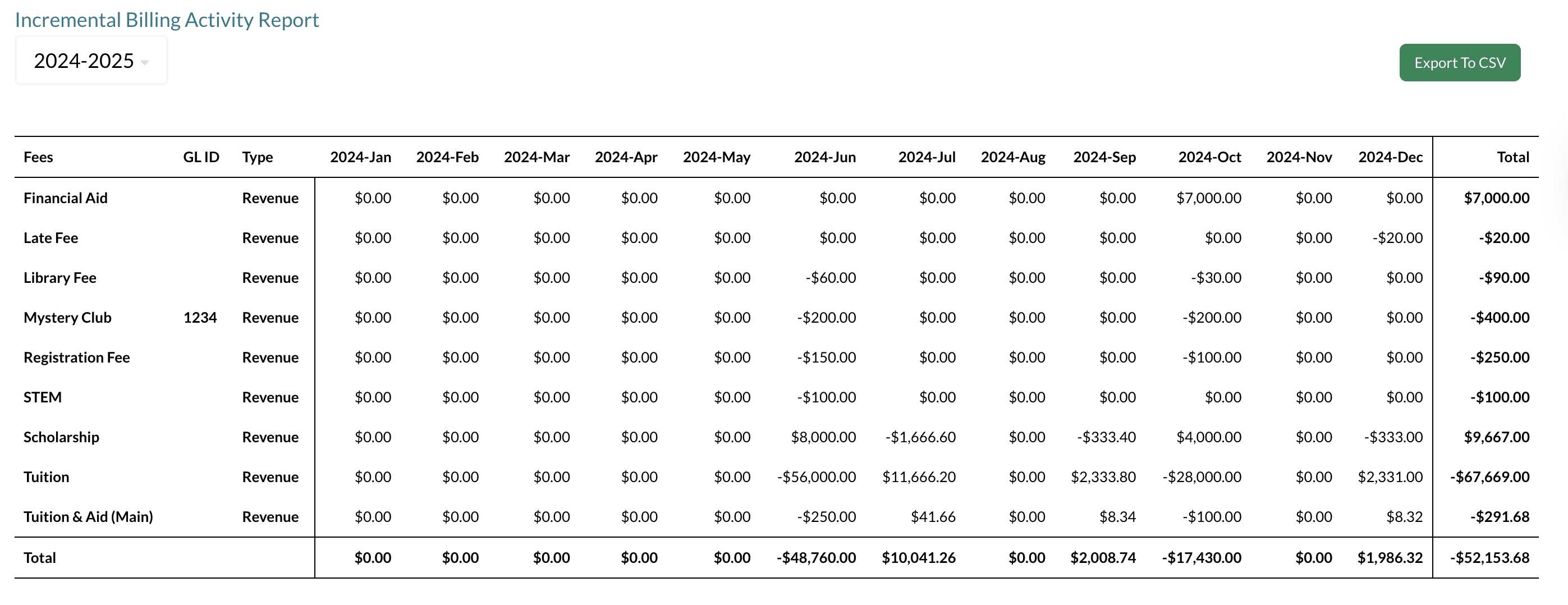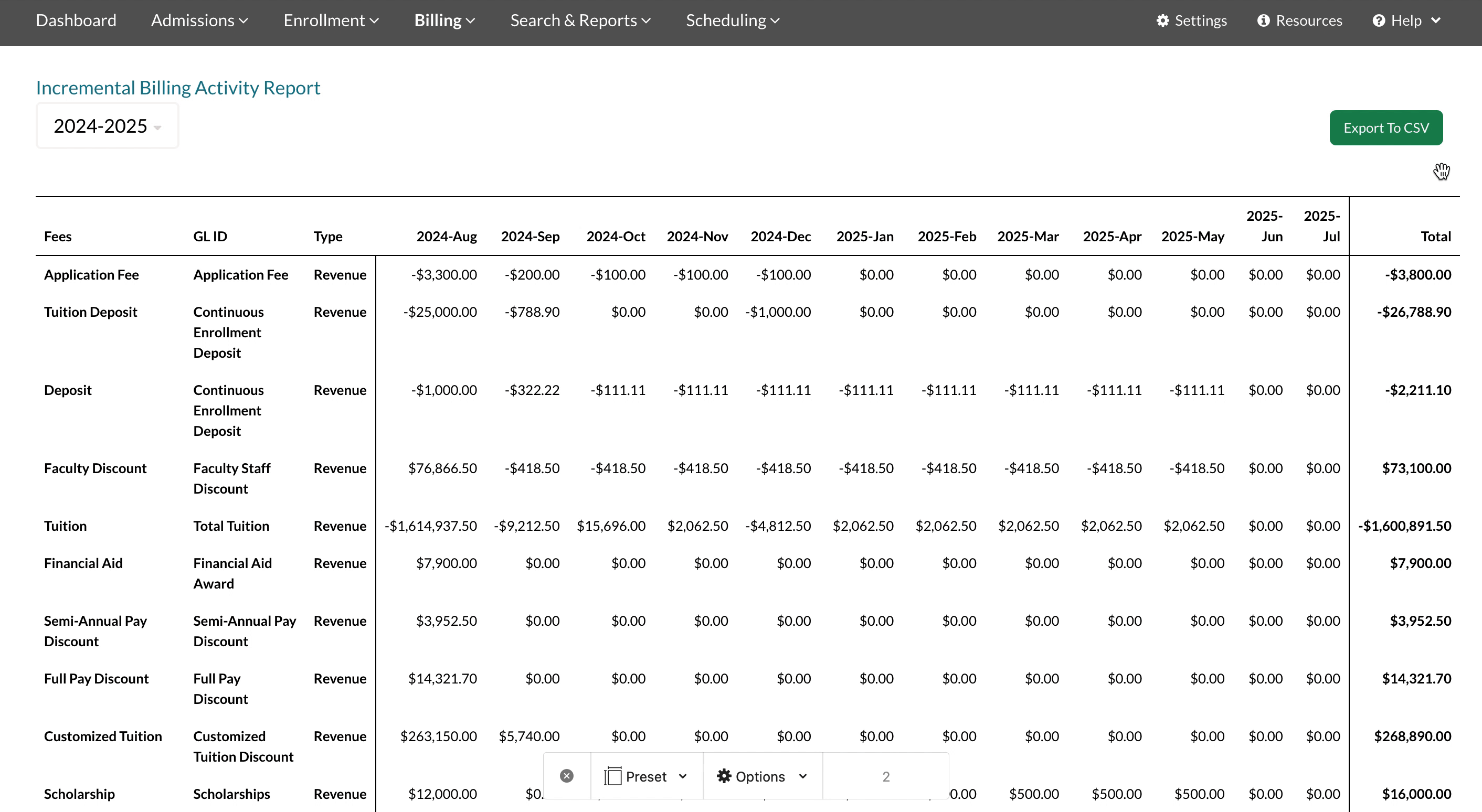Overview
This article provides an overview of the Incremental Billing Activity Report. We'll explore its purpose, key features, and how to effectively utilize it to track changes in revenue.
Who can access this feature and where is it?
Page location: It's found within the Billing menu.
Admin Account Types: System Admins, Admins, and Users
Permissions: Financial
In this Article
- Introduction to the Incremental Billing Activity Report
- Understanding Date Ranges and Transaction Recording
- Report Columns Explained
- Filtering and Exporting Data
Introduction to the Incremental Billing Activity Report
Located in Billing > Incremental Billing Activity Report, this report displays the total value that is agreed to be paid for each billing category (including charges and aid.) It allows you to track changes in revenue in real time.
Understanding Date Ranges and Transaction Recording
Fiscal Year Alignment
The report's date range aligns with the fiscal start and end months configured in the Revenue Recognition section of the Billing Setup page.
Immediate Transaction Recording
The Incremental Billing Activity Report automatically records charges and credits the month that they are recorded. For example, if a family signs a contract in August, the total value of what they owe will appear in the August column, even though those payments may be owed throughout the year.
This also means that any other change that is made to the ledger will automatically be reflected in this report in the column for the month the adjustment was made.
Items Recorded Outside of the Fiscal Year
Anything that is recorded outside of the fiscal year will be reflected in the first month of the fiscal year within the report.
For Example:
- Your school's Fiscal Year is August - May.
- Agatha's family submits a contract in June (outside of your Fiscal Year.)
- The revenue is recorded within this report in the August column (the first month in your Fiscal Year.)
Incidentals
When you add incidental charges at any point in the fiscal year, the charge will be automatically reflected in this report.
For Example:
- Agatha's family signs a contract in July and their ledger is populated with their tuition and fees which comes out to a total of $1000.
- In the Incremental Billing Activity Report, the July column reflects $1000 to reflect the family's tuition.
- In September, you add a $100 incidental charge to their account for the Mystery Writing Club.
- The September column of the report is updated to include this additional $100 income.
Mid Year Withdrawals
When a student withdraws midyear, if you update their ledger to forgive any portion of their balance, the report will automatically adjust to reflect the adjustment you made.
For example:
- Agatha enrolls in July and owes a total of $1000 in tuition.
- She withdraws in December.
- You adjust her account in December so that her family is forgiven the remaining $500 balance on their account.
- Within the Incremental Billing Activity Report, the total reflected in the month of December is reduced by the $500 that was forgiven.
Good to know
This report displays positive values as negative and negative values as positive.
Report Columns Explained
The report features the following columns on the right side:
- Billing Category Name: Displays the name of each billing category.
- GL ID (account code): Shows the general ledger account code associated with each category.
- Type: Indicates the revenue recognition allocation rule set in Billing Setup. This column will display either "Revenue" (indicating immediate revenue recognition = the "at once" option) or "Deferred" (indicating a spread on the revenue recognition = the "equal spread", "spread with catchup", or "remaining spread" options).
Filtering and Exporting Data
Term Filtering
The report can be filtered by term, allowing you to focus on specific academic periods.
CSV Export
The report can be exported to a CSV file for further analysis and reporting.
To export the report, simply click the 'Export to CSV' button located at the top of the report. This allows you to easily analyze the data in spreadsheet software.




Comments
0 comments
Article is closed for comments.